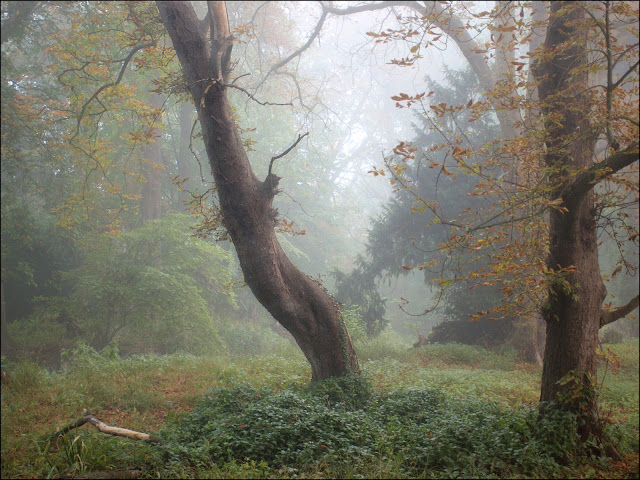Autumn remains just a whispered rumour to most of the trees in my local area. Occasional trees are changing colour but most are ignoring the calendar's inevitable progress, despite the chilly weather which has drifted in.
Whatever the trees may think, there is another plant which is always ahead of them when it comes to taking on a golden glow. There's not much of it where I live, but I know where to go to find it - and find lots of it...
Whatever else we may say about bracken, it looks stunning for a few weeks at this time of year. And Knettishall Heath, where we wandered back in early August, has more bracken than it really needs.
We'll follow the well-marked and well-trodden paths across the heath and through the varied woodland to enjoy the scenery and search for some fungi.
Parasol mushrooms (I think that's what they are) were abundant across the heathland.
As they get older they flatten out and can become quite large.
This little chap is probably (after lengthy perusal of my little guidebook) a Lilac Bonnet, a delicate character that somehow pushes its way up through the fallen twigs and leaf litter.
Wherever you find birch woodland in Britain, you're sure to find Birch Polypore fungus. In time it will kill the tree, though in the past it was put to all kinds of uses by the human population - from tinder to light fires, to a strop for sharpening razors.
And this of course is Fly Agaric, as illustrated in so many fairy tale books. I was very happy to find such a perfect example, even if it's of a slightly more orangey hue than some. But lets carry on in our quest for other kinds of colour.
Lets leave them to their work and continue our magical way through the late October landscape.























































